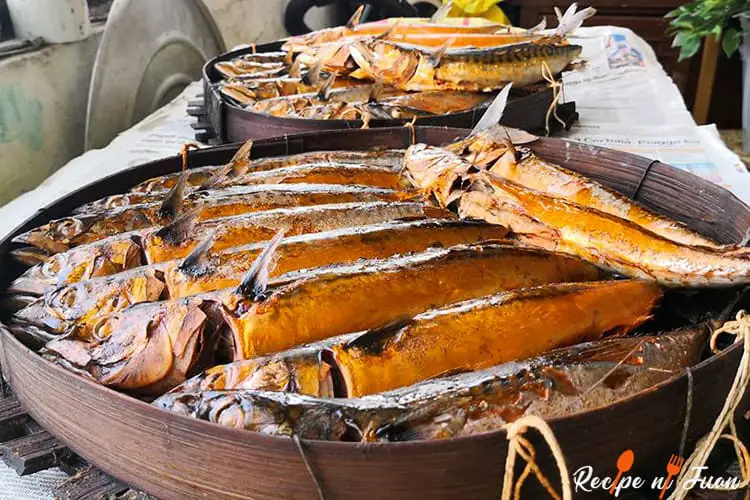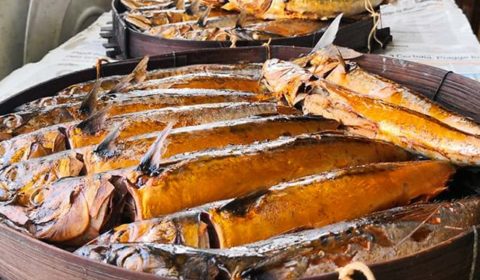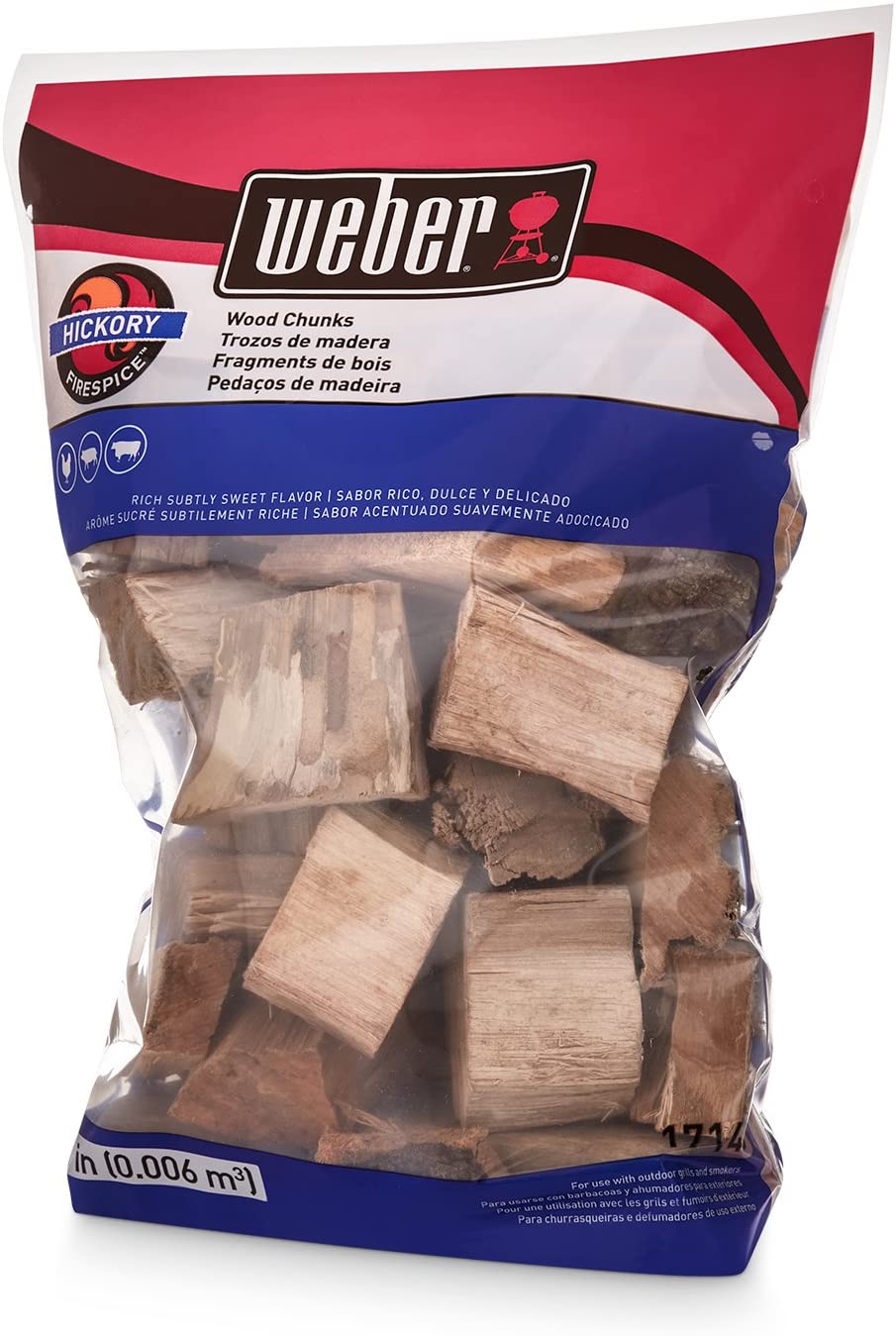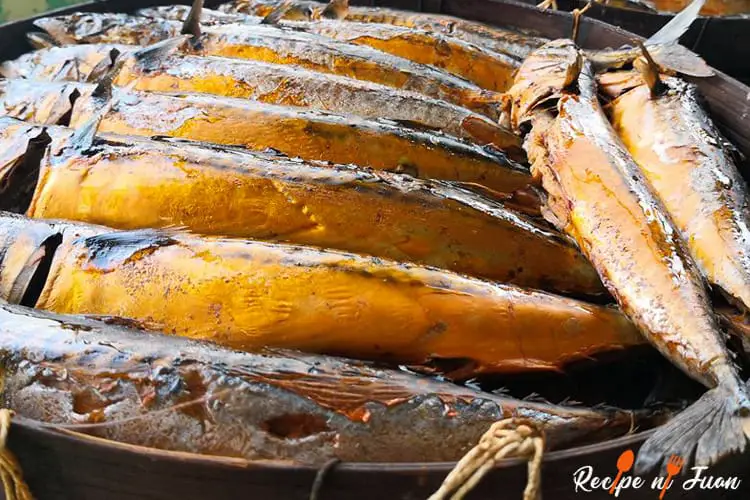Tinapa recipe: make your own Filipino smoked fish
Tinapa is a smoked fish dish typically cooked by Filipinos for breakfast.
Similar to other fish items such as tuyo (like in this champorado dish) and daing, tinapa is also a dried fish fare, commonly sold in wet markets, bagsakan (fish ports), small variety stores, and even in big supermarkets.
You could say that tinapa is actually everywhere!
The tinapa recipe was created to make the shelf-life of the fish longer. That way, people didn’t have to wait for it to get sold while the fish slowly rotted.
In making tinapa, you can be sure that nothing in the produce of the sea goes to waste!
This smoked fish recipe is a crowd pleaser and a great way to start off your day by eating a hearty breakfast!



Check out our new cookbook
Bitemybun's family recipes with complete meal planner and recipe guide.
Try it out for free with Kindle Unlimited:
Read for freeIn this post we'll cover:
Tinapa recipe (Homemade Filipino smoked fish)
Ingredients
- 16 whole galunggong (scad) or tamban (sardinella) about 5 pounds total weight)
- 1 quart salt
- 3 quarts water
- 2 pounds hickory wood chunks (for smoking) Soak wood chunks in water for at least 30 minutes before using them.
Instructions
For the brine:
- In a large bowl or small bucket, add warm water and dissolve the salt.
- Clean the fish and add the brine onto the fish. (I just use our kitchen sink for this (make sure your sink is clean and rinsed thoroughly)
- Let it brine for 1 hour while stirring the brine every 10 minutes.
- The rule of thumb: brine the fish for ½ an hour for every ½ inch (thickness) of fish.
- After an hour, remove the fish from the brine, rinse it well, and set aside.
For the smoker:
- Depending on your smoker, the best way to do this is to keep the fish away from the heat source as much as possible.
- Place your fish on the rack and add your wood chunks to the heat source.
- Cover the smoker and let it smoke for 1 ½ hour.
- You'll need to add wood chunks every 20 minutes to keep the smoke going.
- Enjoy your freshly made tinapa! Serve with fresh tomatoes and onions and don’t forget the garlic-flavored vinegar dipping sauce.
Nutrition
What fish to use for tinapa?
The fish species that are commonly used for making tinapa are galunggong (scads), bangus (milkfish), and mackerel.
I also like to use tamban (sardinella).
The fish should be small in size so that it’s easy to smoke and eat.
But the idea is that you can use various types of local Filipino fish varieties or fish that are readily available in Western markets.
Mackerel, for instance, is a good alternative if you can’t find any of the mentioned Filipino fish.
Check out YouTube user FEATR’s video on making tinapa at home and eating it:
Cooking tips
The tinapa recipe mainly involves washing the fish and putting it in brine for an extended amount of time (usually 5 to 6 hours), air drying, and finally smoking the fish.
The brine is simple: water and salt. Some recipes might call for adding peppercorns, bay leaves, and vinegar to the brine, but I find that it’s not necessary.
Another brine option includes brown sugar alongside salt and ground black pepper. The brown sugar gives the fish a nice glaze and also helps in the smoking process.
The goal of brining is to remove the fishy smell of the fish and to make the flesh firmer. Brining fish prepares it for the smoking process and ensures the fish absorbs all that amazing wood smoke flavor.
When smoking, you can use all types of woods, but hickory is a good choice because it has a nice bacon-like taste.
You can get some excellent Hickory wood chunks from Weber:

There are also some wood types that work well for smoking fish. These include:
- Alder: this is the best “neutral” flavored smoking wood that adds enough smokiness but doesn’t alter the fishy flavors.
- Maple: this s a sweeter wood
- Cherry: this is a light and fruity flavored smoke wood
When smoking the fish, make sure that the fish is not in direct contact with the heat source. You want to avoid overcooking and drying out the fish.
Substitutions & variations
Tinapa is a general term for Filipino smoked fish. The main variation on this dish is to switch up the type of fish you smoke.
Another thing you can change is the brine – you can make it sweeter or saltier and add herbs and aromatics to it. Condiments can also be added to the dish, such as vinegar, onions, and tomatoes.
And finally, you can also experiment with different woods for smoking. Different woods will give the tinapa different flavors.
You can use the tinapa smoked fish to make a dish called lumpiang tinapa which is fried egg rolls with smoky milkfish.
How to serve and eat
Tinapa can actually last for a very long time, and you can have it as breakfast for several days, though tinapa can also be eaten during lunch and dinner.
Similar to the other fish I mentioned above, this delicacy is eaten for breakfast with vinegar, eggs, and sinangag, or garlic fried rice. Fried eggs may also be served on the side.

Some people also like to serve smoked fish with a combination of vinegar and tomatoes.
The fish is usually deboned before eating, though some people do eat it with the bones. I would recommend removing the bones, as they can be quite sharp and difficult to eat.
To eat, you can just flake the fish with a fork and mix it with your sinangag, or use the flakes to make this Ginataang langka with tinapa flakes recipe.
Similar dishes
You can find canned tinapa in tomato sauce, which can be eaten as is or used as an ingredient for other dishes.
Tinapa flakes are also popular and can be used as a topping for salads, pasta, and pizza.
If you want a heartier dish, you can make tinapa soup. This soup is usually made with milkfish, but you can also use other types of fish.
The soup is made by simmering the smoked fish in water or broth with vegetables. It’s usually served with rice on the side.
Some other Filipino smoked fish dishes include:
- Tinapang galunggong: This dish is made with mackerel scad and is usually served with sinangag and vinegar.
- Tinapa bisaya: This dish is made with mackerel scad and is usually served with coconut milk, ginger, and chili peppers.
- Tinapang bangus: This dish is made with milkfish and is usually served with sinangag, vinegar, and eggs.
- Tinapa spaghetti: This dish is made with smoked fish flakes and is usually served with tomato sauce and spaghetti noodles.
- Tinapa lasagna: This dish is made with smoked fish flakes and is usually served with tomato sauce and lasagna noodles.
- Tinapa rice: This dish is made with smoked fish flakes and is usually served with white rice.
Conclusion
Tinapa is Filipino’s popular smoked fish recipe. It is a popular dish in the Philippines and is often served as an appetizer or main dish.
Tinapa can be made from a variety of fish, but the most common type used is bangus (milkfish).
The fish is first cleaned and marinated in a vinegar-based mixture and then smoked over wood to infuse it with delicious smoke flavor.
So, if you’re ever in the mood for a delicious and easy-to-make smoked fish recipe, try making tinapa at home! It’s sure to be a hit with all ages!
Check out our new cookbook
Bitemybun's family recipes with complete meal planner and recipe guide.
Try it out for free with Kindle Unlimited:
Read for freeJoost Nusselder, the founder of Bite My Bun is a content marketer, dad and loves trying out new food with Japanese food at the heart of his passion, and together with his team he's been creating in-depth blog articles since 2016 to help loyal readers with recipes and cooking tips.
